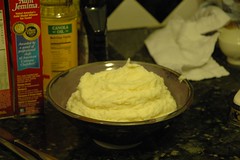And the IgNobel goes to!
Dung Beatles!
The Guardian has the story...
Ig Nobel prize for discovery that dung beetles navigate by the stars
The 2013 Ig Nobels also recognised work on opera-loving mice, walking on water, and predicting when cows will sit down
Stargazing dung beetles, mice that survive for longer after heart surgery when they listen to opera, and whether or not you could walk on water on other planets – all of them are serious scientific questions that researchers sweated over for years. On Thursday, their hard work was honoured with possibly one of the most sought-after nods from their scientific peers: an Ig Nobel prize.
This is the 23rd year of the awards – a spoof of the even more prestigious Nobel prizes, which will be announced next month. The 10 prizes, organised by the humour magazine Annals of Improbable Research and awarded at Harvard University, honour achievements that "first make people laugh, and then make them think".
The joint astronomy and biology prize went to Eric Warrant's team at the University of Lund for their discovery that dung beetles navigate using the stars.
The researchers had been studying the beetles' ability to roll their balls of dung in straight lines by using the moon as a guide – they use the pattern of polarised light around the moon as a kind of celestial compass.
"One night, however, the night was moonless yet we noticed the beetles could still orient in straight lines," said Warrant. "At first we were shocked and worried that our previous experiments using the moon were wrong. But then looking up we saw the broad stripe of light that is the Milky Way and realised they might be using this as a compass cue. This, it turns out, was the case."
Warrant said other nocturnal navigators such as birds and moths may also use the Milky Way as a compass.
[...]
The probability prize was awarded to animal scientists at Scotland's Rural College for making two related discoveries. "First, that the longer a cow has been lying down, the more likely that cow will soon stand up," read their citation. "And second, that once a cow stands up, you cannot easily predict how soon that cow will lie down again."
Bert Tolkamp said he and his colleagues were running several research programmes aimed at improving animal health and welfare. In their award-winning research, they fitted sensors on cows' legs that recorded how long they spent standing up or lying down.


